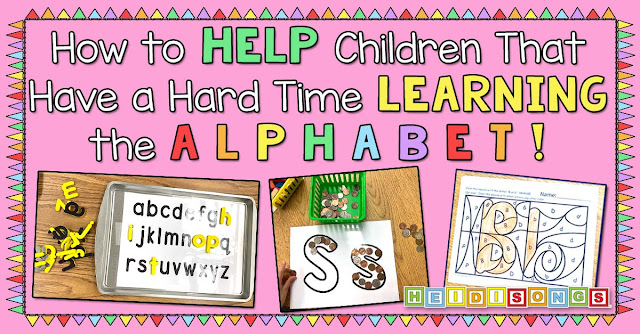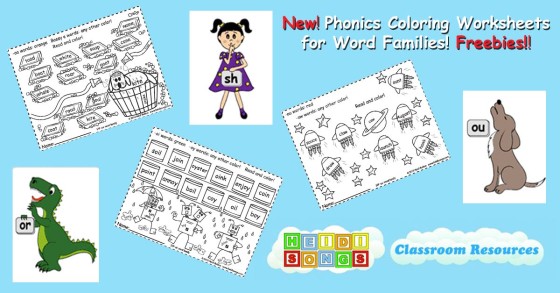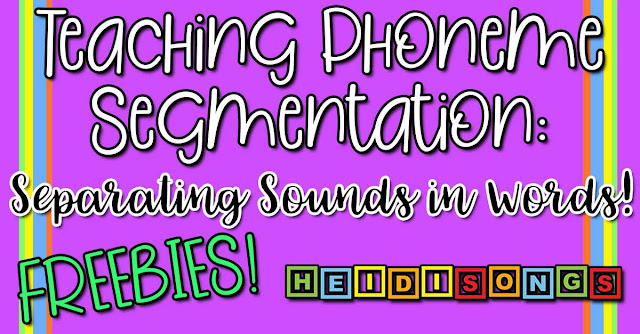The ADHD, Movement, and Learning Connection
Did you know that children with ADHD often learn much better when the lesson has movement in it? Trying to force these active children to sit still all day is really the least effective way to help them learn, and doesn't work anyway. Did you know that providing children with ADHD with regular exercise can help reduce the symptoms of ADHD and help them do better in school? Read below for some practical suggestions on how to get more movement into the day to help these little ones learn. This blog post today was written by my friend and Marriage & Family Therapist, Kristen Watkins. Enjoy!
--------------------
This is Kristen, our guest blogger, with her husband and her adorable twins!
Hello everyone! My name is Kristen Watkins, and Heidi asked me to guest blog for her today to share about the connection between Attention-Deficit Hyperactivity Disorder and movement. Currently, I am engaged in the daily work of raising my infant twins but I am a Marriage and Family Therapist by training. I have spent a great deal of time helping parents, teachers and kiddos navigate the world of ADHD. I've seen the biggest changes in children who add movement into their lives and make the effort to stay active in and out of the school day. Today, I want to dive into what ADHD is, look at the research a bit and discuss practical applications for adding movement into the lives of little ones living with ADHD.
Symptoms of ADHD according to the American Psychiatric Association, 2013.
Attention-Deficit Hyperactivity Disorder is the diagnostic name given to a group of symptoms that affect an individual’s ability to concentrate. Some of the symptoms of ADHD are trouble sitting still, difficulty waiting turns, difficulty doing quiet tasks, difficulty focusing, being easily distracted, and often fidgeting and squirming. (American Psychiatric Association, 2013). These symptoms make sitting still in class, listening to the teacher and giving focused attention to activities a challenge. This can be frustrating for all parties involved and can leave students feeling unsuccessful in the classroom. It can also leave teachers and parents at their wits' end. But fear not: there is hope!
Current research is uncovering the big connection between physical activity and managing symptoms of ADHD. In a study (Verret, 2011) of 21 children ages seven to twelve that were diagnosed with ADHD, researchers found that students who engaged in 45 minutes of physical activity three times a week showed a decrease in ADHD symptoms. After 10 weeks, students who participated in the study showed increases in their ability to give focused attention, increases in motor skills, decreases in impulsivity and decreases in inattentiveness.
Calvin probably had ADHD! But we all LOVE Calvin!
A separate study (Katz, 2010), found that physical activity can be completed in short bursts throughout the day and still have the same results and impact on reducing ADHD symptoms. This was a much larger study and included 1,216 students in grades second to fourth who came from from five different schools. Half of these students participated in the fitness program and half of them did not change their daily routines (Katz, 2010). Teachers and parents assessed the students on social skills and classroom performance before and after participation in the fitness burst program. The researchers found that students who participated in the program had higher reading and math scores. Also, students who were taking ADHD medication were taking it at lower doses or less often by the end of the study, compared with the control group.
Dory couldn't concentrate for longer than a few seconds, but she was the very best, most lovable character in "Finding Nemo!"
This research is so exciting because it backs up what teachers and parents of young children already know: little bodies and little minds need to move! What is even better is that including short bursts of activity throughout the day is the perfect method for getting children to move more at home and at school. The following are a few suggestions on how to get kiddos with and without ADHD up and moving all throughout the day.
HeidiSongs are a fantastic way to get movement in at home and at school. Her new Color and Shapes DVD runs through 11 colors and 9 shapes and includes body movements for each song. Going through the whole DVD is just about twenty-five minutes of physical activity! What is nice about the different DVD's is that you can start and stop them based on the time you have available. (Below is a clip from HeidiSongs' Sing and Spell the Sight Words Vol. 3 Animated DVD.)
Centers are a great way to work in physical activity bursts at home and in the classroom. Just moving from station to station helps kiddos with ADHD make the mental shift of switching activities by making a physical move. I love the idea from the blog deceptivelyeducational.blogspot.com to make a sidewalk chalk spelling hop. Write letters out in a grid and have the kiddos hop to each letter to spell out a word. Numbers and equation signs could easily replace the letters in the grid to make this a movement rich math activity. The important thing is that it uses big muscle groups and keeps kids’ bodies moving.
One of my favorite activities from school were indoor snowball fights. To play each student writes a sight word or math problem on a slip of white notebook paper and then crumples it up. The teacher sets a timer and everyone throws the papers around in the giant snowball fight to mix them up. When time is up, kiddos turn to a partner and read their words or solve the math problem. Little ones have a blast switching between the Sing and Spell DVDs, snowball fights and doing a spelling hop to learn their sight words!!
There are also many ways to add in itty-bitty bursts of activity all through the day. Try having the class do five jumping jacks or deep knee bends in line before heading out the door. Have students who struggle with ADHD be the paper passers so that they are up and moving more. Throw a ball to the student whose turn it is to answer a question. Have a one minute dance party before sitting down in desks after lunch. On Heidi’s Classroom Management DVD you can find the tracing, cutting and gluing songs. These would be a great way to get everybody up and moving before starting an art project. Below is one of the songs from the Classroom Management CD/DVD, called, "When the Bell Rings, Freeze!"
If you are a HeidiSongs fan you already know the benefits and importance of movement combined with learning. The research continues to pour in to show just how beneficial including physical activity in each day is for everyone, but especially for little ones with ADHD! By allowing home and classroom time for movement, children with ADHD can increase their ability to focus throughout the day and help everyone have a lot more FUN!
Here is a link to a company called NickyNote.com that sells this same type of thing for older children. Their content is sold in software rather than DVD's, and the music is not recorded in a polished, professional sounding way. However, the content and and concept is excellent, and it is a good resource for parents and teachers of older children.
Focus? What's that? :)
Now it’s your turn! What are your ideas for getting movement in each day?
For more information and ideas about what was discussed here, follow me on Pinterest at Kristen Watkins. You can also follow HeidiSongs on Pinterest here.
References:
American Psychiatric Association. (2013). Diagnostic and statistical manual of mental disorders (5th ed.) Arlington, VA:American Psychiatric Publishing.
Katz, D., Cushman, D., Reynolds, J., et. al. (2010). Putting physical activity where it fits in the school day: Preliminary results of the abc (Activity Bursts in the Classroom) for fitness program. Preventing Chronic Disease. 7(4) A82.
Verret, C., Guay, M., et. al. (2011). A physical activity program improves behavior and cognitive functions in children with adhd: And exploratory study. Journal of Attention Disorders. 16(1) 71-80.
---------------
I hope you enjoyed everything Kristen had to say! She sure has some great information in there. Enjoy!
-Heidi
----------------------------------
Follow me! Did you enjoy this post? Do me a favor and share it with your friends! And follow this blog by signing up for my email updates here, or follow on Bloglovin', or follow me on TPT! I'm also on Pinterest, Facebook, Twitter, Instagram, Google+ and YouTube, too! Don't forget to sign up for our email newsletter for special deals and promo codes that you won't find out about anywhere else.
--------------------
Hello everyone! My name is Kristen Watkins, and Heidi asked me to guest blog for her today to share about the connection between Attention-Deficit Hyperactivity Disorder and movement. Currently, I am engaged in the daily work of raising my infant twins but I am a Marriage and Family Therapist by training. I have spent a great deal of time helping parents, teachers and kiddos navigate the world of ADHD. I've seen the biggest changes in children who add movement into their lives and make the effort to stay active in and out of the school day. Today, I want to dive into what ADHD is, look at the research a bit and discuss practical applications for adding movement into the lives of little ones living with ADHD.
Attention-Deficit Hyperactivity Disorder is the diagnostic name given to a group of symptoms that affect an individual’s ability to concentrate. Some of the symptoms of ADHD are trouble sitting still, difficulty waiting turns, difficulty doing quiet tasks, difficulty focusing, being easily distracted, and often fidgeting and squirming. (American Psychiatric Association, 2013). These symptoms make sitting still in class, listening to the teacher and giving focused attention to activities a challenge. This can be frustrating for all parties involved and can leave students feeling unsuccessful in the classroom. It can also leave teachers and parents at their wits' end. But fear not: there is hope!
Current research is uncovering the big connection between physical activity and managing symptoms of ADHD. In a study (Verret, 2011) of 21 children ages seven to twelve that were diagnosed with ADHD, researchers found that students who engaged in 45 minutes of physical activity three times a week showed a decrease in ADHD symptoms. After 10 weeks, students who participated in the study showed increases in their ability to give focused attention, increases in motor skills, decreases in impulsivity and decreases in inattentiveness.
A separate study (Katz, 2010), found that physical activity can be completed in short bursts throughout the day and still have the same results and impact on reducing ADHD symptoms. This was a much larger study and included 1,216 students in grades second to fourth who came from from five different schools. Half of these students participated in the fitness program and half of them did not change their daily routines (Katz, 2010). Teachers and parents assessed the students on social skills and classroom performance before and after participation in the fitness burst program. The researchers found that students who participated in the program had higher reading and math scores. Also, students who were taking ADHD medication were taking it at lower doses or less often by the end of the study, compared with the control group.
This research is so exciting because it backs up what teachers and parents of young children already know: little bodies and little minds need to move! What is even better is that including short bursts of activity throughout the day is the perfect method for getting children to move more at home and at school. The following are a few suggestions on how to get kiddos with and without ADHD up and moving all throughout the day.
HeidiSongs are a fantastic way to get movement in at home and at school. Her new Color and Shapes DVD runs through 11 colors and 9 shapes and includes body movements for each song. Going through the whole DVD is just about twenty-five minutes of physical activity! What is nice about the different DVD's is that you can start and stop them based on the time you have available. (Below is a clip from HeidiSongs' Sing and Spell the Sight Words Vol. 3 Animated DVD.)
Centers are a great way to work in physical activity bursts at home and in the classroom. Just moving from station to station helps kiddos with ADHD make the mental shift of switching activities by making a physical move. I love the idea from the blog deceptivelyeducational.blogspot.com to make a sidewalk chalk spelling hop. Write letters out in a grid and have the kiddos hop to each letter to spell out a word. Numbers and equation signs could easily replace the letters in the grid to make this a movement rich math activity. The important thing is that it uses big muscle groups and keeps kids’ bodies moving.
One of my favorite activities from school were indoor snowball fights. To play each student writes a sight word or math problem on a slip of white notebook paper and then crumples it up. The teacher sets a timer and everyone throws the papers around in the giant snowball fight to mix them up. When time is up, kiddos turn to a partner and read their words or solve the math problem. Little ones have a blast switching between the Sing and Spell DVDs, snowball fights and doing a spelling hop to learn their sight words!!
There are also many ways to add in itty-bitty bursts of activity all through the day. Try having the class do five jumping jacks or deep knee bends in line before heading out the door. Have students who struggle with ADHD be the paper passers so that they are up and moving more. Throw a ball to the student whose turn it is to answer a question. Have a one minute dance party before sitting down in desks after lunch. On Heidi’s Classroom Management DVD you can find the tracing, cutting and gluing songs. These would be a great way to get everybody up and moving before starting an art project. Below is one of the songs from the Classroom Management CD/DVD, called, "When the Bell Rings, Freeze!"
If you are a HeidiSongs fan you already know the benefits and importance of movement combined with learning. The research continues to pour in to show just how beneficial including physical activity in each day is for everyone, but especially for little ones with ADHD! By allowing home and classroom time for movement, children with ADHD can increase their ability to focus throughout the day and help everyone have a lot more FUN!
Here is a link to a company called NickyNote.com that sells this same type of thing for older children. Their content is sold in software rather than DVD's, and the music is not recorded in a polished, professional sounding way. However, the content and and concept is excellent, and it is a good resource for parents and teachers of older children.
Now it’s your turn! What are your ideas for getting movement in each day?
For more information and ideas about what was discussed here, follow me on Pinterest at Kristen Watkins. You can also follow HeidiSongs on Pinterest here.
References:
American Psychiatric Association. (2013). Diagnostic and statistical manual of mental disorders (5th ed.) Arlington, VA:American Psychiatric Publishing.
Katz, D., Cushman, D., Reynolds, J., et. al. (2010). Putting physical activity where it fits in the school day: Preliminary results of the abc (Activity Bursts in the Classroom) for fitness program. Preventing Chronic Disease. 7(4) A82.
Verret, C., Guay, M., et. al. (2011). A physical activity program improves behavior and cognitive functions in children with adhd: And exploratory study. Journal of Attention Disorders. 16(1) 71-80.
---------------
I hope you enjoyed everything Kristen had to say! She sure has some great information in there. Enjoy!
-Heidi
----------------------------------
Follow me! Did you enjoy this post? Do me a favor and share it with your friends! And follow this blog by signing up for my email updates here, or follow on Bloglovin', or follow me on TPT! I'm also on Pinterest, Facebook, Twitter, Instagram, Google+ and YouTube, too! Don't forget to sign up for our email newsletter for special deals and promo codes that you won't find out about anywhere else.















